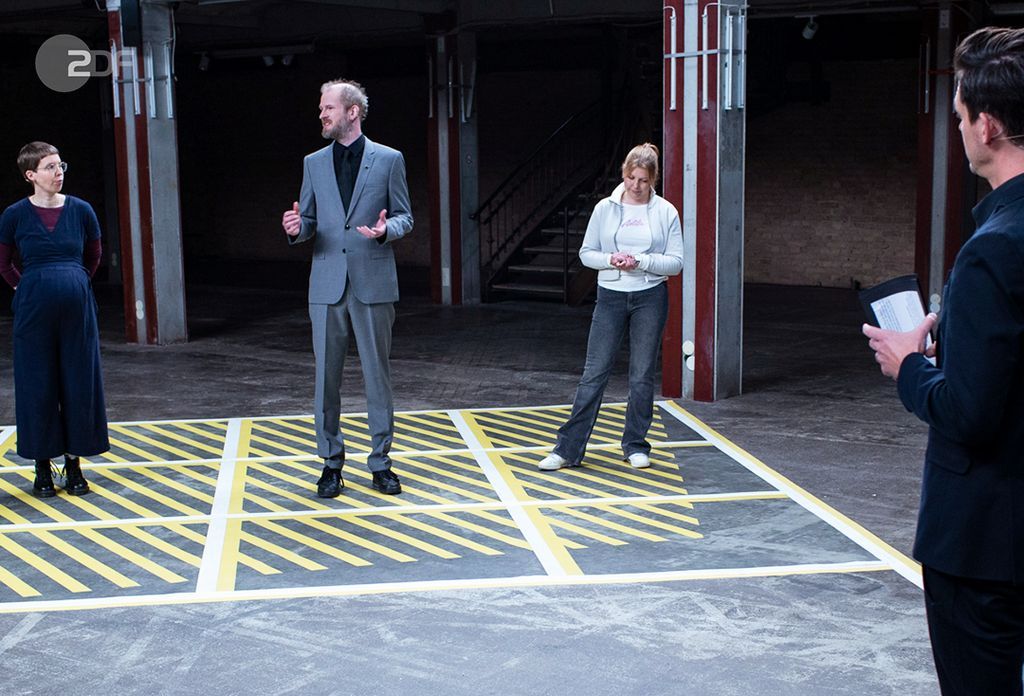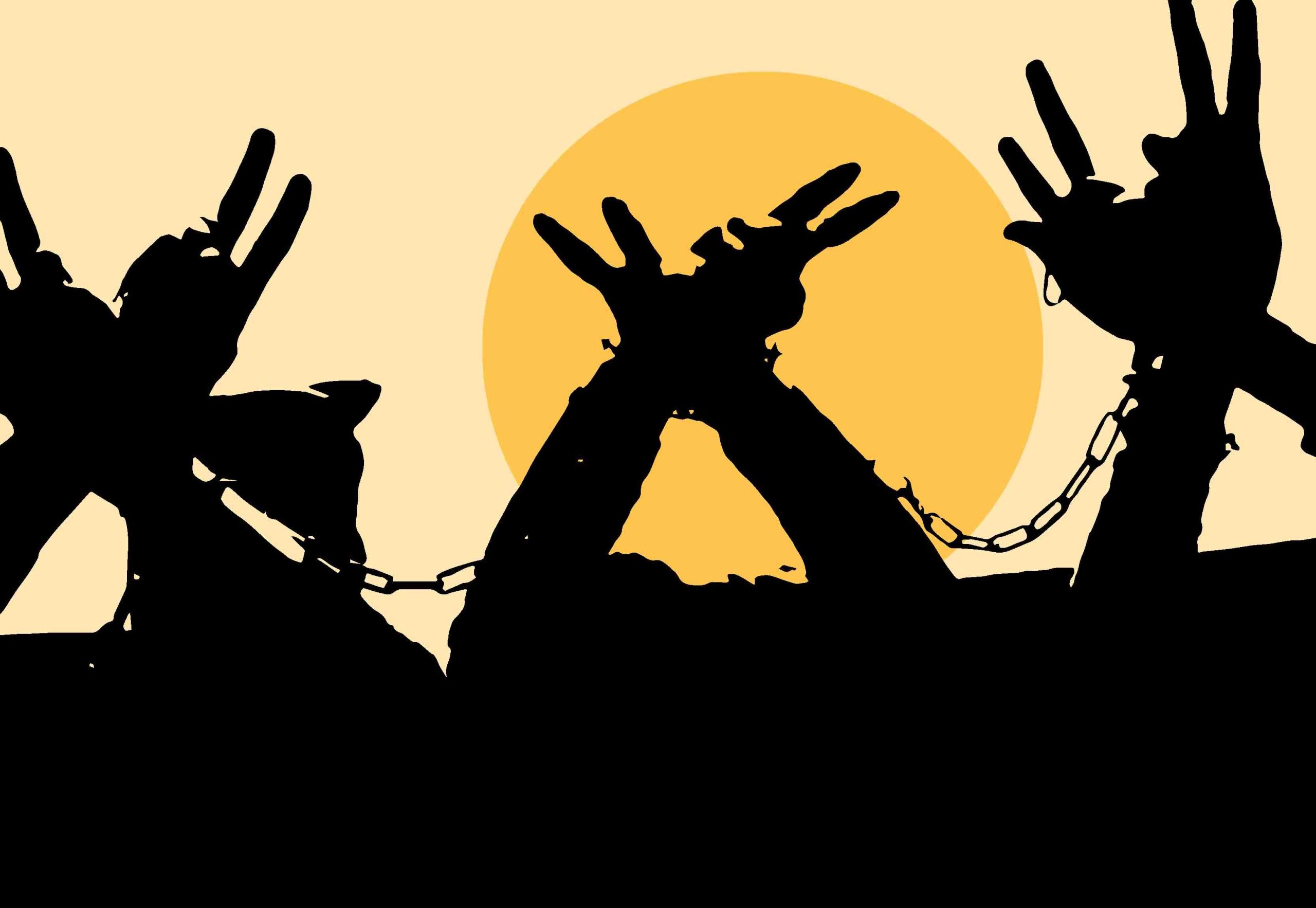In this opening editorial of the first issue of Abolition Journal, Peter Kletsan takes apart the concept of “restorative justice” from a libertarian perspective.
Restorative justice has been popularized in recent decades as a respectful and humane alternative to state sanctioned, retributive incarceration. Abolitionists and reformists alike have praised this model of retroactively addressing harm as a way of challenging the monopoly of the state on the concepts of accountability and justice. Restorative justice sets important goals for its processes, which center on the victim and offender moving beyond a tragic situation. Restorative justice has no doubt been a positive new development in critical thought around crime. However, I want to posit some distinct limits of this approach that anarchists and abolitionists should be particularly concerned with.
The goal of restorative justice is to facilitate a space for direct engagement between the victims and perpetrators of a crime that includes the community in which a crime takes place. According to a popular advocate it is “an option on doing justice after the occurrence of a crime which gives priority to repairing the harm that has been caused.”[1] It is beneficial to those involved because it offers a unique line of communication that privileges the voices of the individuals most affected by a crime. It is uniquely powerful because it holds its aim to be the healing of all parties rather than the pain of one and the retributive satisfaction of the other. This transformative process is in practice at San Quentin, facilitated by organizations like the Insight Prison Project (IPP) and its Victim Offender Education Group (VOEG). Late last year IPP was visited by a delegation of Justices from Nepal interested in implementing a similar program there. Incarcerated people at San Quentin reported to the delegation that the restorative process was highly transformative in that it allowed them to be forgiven by those who they had harmed and cultivated in them an ability to forgive themselves.[2]
The dialogical process that is facilitated by restorative justice also incorporates the voice of the community. The notion that one’s community is a “stakeholder” in the restoration of a harm is central, and theorists of restorative justice recognize that the state’s acting as the voice of community in judicial processes erases the voices of actual community members who experience harm as a result of particular crimes.[3] This insight has motivated anarchist communities to incorporate restorative justice into practices of dealing with conflict internally, thus building more capable communities and undermining the state’s insistent narrative of punishment and rehabilitation. Writers like Coy McKinney and Duane Ruth-Heffelbower have gone so far as to label restorative justice as the definitive “anarchist criminology.” Like most people interested in critical criminology, I have very little criticism to offer of restorative justice in itself. I would not presume to challenge its practitioners who largely extol the transformative power that this process has had in their own lives.
However, a narrative persists that caries the promise of restorative justice to an overreaching conclusion. Increasingly critics of mass incarceration are confident that restorative justice is an alternative that will slowly replace or reform the state’s monopoly on “justice.” It is particularly of restorative justice as an “alternative” to state retribution that I remain skeptical. To my eyes, restorative justice has within it no revolutionary power remotely sufficient to undo the embedded ideology of retribution, nor does it bear any promise of truly challenging the material power of the state and the prison industrial complex. Restorative justice is a powerful, therapeutic practice that creates healing for individuals and exposes the stark failure of the state’s rehabilitative enterprise. However, we must cease to see it as a structural alternative that will take the place of incarceration. Though it is a useful tool for undermining the retributive narrative of the state, it is insufficient to meet the challenges of ever-encroaching state legality and mass incarceration.
Is Restorative Justice “Anarchist Criminology?”
I want to situate my concerns by directing them toward anarchist criminologists who are pinning their abolitionist hopes on restorative justice. Coy McKinney gives a compelling argument that restorative justice is the ultimate anarchist criminology. In this section, I will outline McKinney’s argument while suggesting that it is an increasingly common treatment of restorative justice in critical circles.
McKinney’s criticisms of the status quo open space for the alternative conception of justice that is offered by restoration. McKinney begins his argument by demonstrating that the state derives much of its power and perceived legitimacy from the consent or complicity of the general public. “Part of the state’s existence and legitimacy is due to the mental recognition we assign to it. If everyone were to shift their thinking to a worldview in which the state was undesired, and instead, looked to live without its authority, the state’s power and existence would be critically undermined.”[4] To divest our consent from the state, then, is the principle recourse that anarchists and autonomists have against it.
This vision of political action, according to McKinney, saves anarchism from its perennial misfortune of being seen as a subculture that advocates “violence and mayhem.” Anarchists like McKinney believe that the state may be defeated by spreading models of community-based accountability and by placing our collective power and energy in things other than direct confrontation and antagonism.
One of the ways that we can divest from the state is by practicing and advocating restorative justice. “The criminal justice system will continue to work the way it has, as long as we continue to consent and participate in it. If we collectively take a stand and withdraw our consent from the system, and instead redirect how we deal with conflict to a restorative approach, the criminal justice system will become irrelevant.”[5] In order to disempower the state, and free ourselves, all that is needed is the collective divestment of consent from its structures and operations. In other words, violent confrontation with the state is unnecessary and often counterproductive, but creative alternatives that limit our dependence on the state are our greatest revolutionary tools.
Restorative justice is a method by which we divest consent from state institutions, in this case, namely courts, judges, and prisons. It proves that accountability and community integrity can be achieved more effectively and with greater humanity without the state. By doing so, restorative justice becomes an alternative to mass incarceration. It seeks to undermine the state’s monopoly on justice and accountability. Having this power at its core is what, for McKinney, makes restorative justice the definitive anarchist criminology. In what follows I will raise a series of concerns about this view.
Restorative Justice and Revolutionary Possibility
McKinney is not alone in his affinity for restorative justice. Conflict resolution specialists like Duane Ruth-Heffelbower also describe the restorative process as an essentially anarchist criminology. Angela Davis suggests that restorative justice will play a large part in filling the void that is supposed to be left by the abolition of the prison industrial complex.[6] Critical Resistance, perhaps the foremost abolitionist organization in the United States, advocates for restorative and transformative justice processes as a strategy for changing the retributive narrative.[7] As mentioned above, incarcerated people are benefiting from practices of restorative justice inside San Quentin.
McKinney represents the persistent danger of overstating the power of restorative justice at the structural level. The mistake is in pinning to it the promises of abolition and the end of state legality. In his quasi-anarchist discussion of restorative justice, Ruth-Heffelbower betrays the reality that there is nothing essentially anarchist or antiauthoritarian about restorative justice.
While organized by the central authority and operated by agents of the central authority, the restorative practices of New Zealand are still anarchist. The central practice used in New Zealand and most other places by RJ practitioners is a victim offender dialogue led by a facilitator with other stakeholders present. The decisions made by the group in working to meet the needs of the victim and providing the offender with an opportunity to be accountable to the community do not reference law, nor is enforcement by the central authority a key feature. Only when the offender refuses to be accountable to the group does the central authority stand ready to enforce laws by punishing the offender.[8]
What have we gained from restorative justice if we rely on the state, if not to facilitate it, to stand by and enforce its practice? This vision is what we open ourselves to when we advocate for restorative justice as a new state or structural apparatus. Not unlike education generally, restorative justice is a powerful enterprise that is by no means immune to state cooptation.
Restorative justice is revolutionary in exactly and only this sense. Restorative justice cultivates the power of individuals and strengthens social connections between them. In doing so, its practitioners assert their own humanity and recognize the humanity of someone they have harmed or one who has harmed them. Incarcerated people have their guilt reified everyday by their material conditions and the narrative that surrounds and justifies those conditions. Restorative justice is a mode by which incarcerated and criminalized people can salvage their self-respect from a system that is consistently robbing them of it. Thus, the possibility is opened up for them to salvage their agency as political actors. But, all of the empowerment and salvation that is offered by restorative justice is contingent on its participation not being forced or coerced.
Restorative justice can save the subjectivity of its practitioners from the mechanisms of guilt and social death, but it is not the weapon by which those mechanisms can be destroyed. It is not a revolutionary praxis in its own right. It is powerful in what it offers to those who practice it. However, there is nothing embedded in a practice like this to constitute a direct challenge to the material powers of the prison industrial complex and the American police state.
Problematizing the Categories of Criminality
One crucial reason that abolitionists should be suspicious of restorative justice as a structural alternative becomes more obvious in light of the proportions of various crimes for which people are incarcerated. According to 2012 data, 53.8% percent of inmates incarcerated in state jurisdictions were charged with crimes classified as violent. Only 26.2% were serving time for charges of murder, sexual assault, or manslaughter.[9] These are crimes that we uncontroversially think of as very serious, as they are interpersonal in nature and create harms that and irreparable in material terms. If we include “aggravated and simple assault” in our category of very serious interpersonal crimes, the proportion increases to 37.3%. Furthermore, what is important about this minority of offenses is that they are ostensibly not complicated by property relations. These interpersonal offenses are the sorts of crimes that restorative justice is most concerned with. To quote its founding theorists, “Restorative justice is not primarily intended for ‘minor’ offences or first time offenders. . . . Experience has shown that restorative approaches may have the greatest impact in more severe cases. Moreover, if the principles of restorative justice are taken seriously, the need for restorative justice is especially clear in these cases.”[10] In strictly numerical terms, we have here a reason to be concerned about the potential for restorative justice to be an alternative that would replace incarceration. The sorts of offenses for which restorative justice has been developed and on which it continues to be focused account for less than half of the incarcerated population.
The numbers, however, are much less significant than the relations that are implicit in these categories. The above figure does not account for robbery (13.7%), nor does it reflect nonviolent crimes relating to property (18.8%).[11] So, according to the state’s data, 32.5% of people incarcerated at this time are charged with crimes for which property was the central factor. The remainder of crimes are drug crimes and crimes of “public order.”
In “Law and Authority,” Peter Kropotkin hands down to us an influential anarchist criticism of property and that points out the hierarchical relations inherent in this majority of so-called crime. He centers his criticism on the claim that after the fall of feudalism the task of lawmaking was transferred to the bourgeoisie. Thus he observes, “the major portion have but one object—to protect private property, i.e., wealth acquired by the exploitation of man by man.” He further notes that the remainder of laws serves the secondary function of maintaining and reinforcing state power and control.[12]
These secondary laws include those that criminalize direct challenges against the social order: laws regarding nuance and obstruction of space, perhaps laws that govern the use of and sale of drugs, and certainly laws that specify the power, and often the immunity of governmental bodies including the police. Kropotkin sees the function of these laws as secondary because they aid in the achievement of the chief function of law. That primary function is the maintenance of the dominance of property owners and the hierarchy created by economic relations under capitalism.
Jeff Ferrell suggests a way of thinking about our understanding of criminality in light of this seminal observation, “anarchist criminologists argue that the political (and politically inequitable) nature of state law and state criminalization means that acts of crime under such a system must also carry some degree of political meaning.”[13] Ferrell thus suggests that we rethink the distinction that we assume between political criminality and standard or apolitical criminality. Ferrell’s examples are those that already have political texture and are generally familiar to anarchist scenes, “graffiti writing, ‘obscene’ art and music performances, pirate radio broadcasts, illegal labor strikes, curfew violations, shoplifting, drug use, street cruising, gangbanging, computer hacking.”[14]
However, why should we stop there? Implicit in the anarchist critique of capitalism, exemplified here by Kropotkin, is the recognition that property relations are power relations that reinforce class hierarchy, and property law exists to protect those relations in service of the dominating class. In this way, I submit that at least 32.5% of the incarcerated population is made up of political prisoners if for no other reason than that their “offences,” regardless of their inception or intent, were direct challenges to the property relations that are created by and enforced in service of the bourgeoisie. To engage in restorative justice in these instances is problematic, even hypocritical, for anarchists. To do so is to attempt to restore the very relations of domination that we oppose.
Restorative justice is more obviously inapplicable in the latter cases of drug crime and crimes of “public order” for which the state is the supposed victim. So, from an anarchist perspective, restorative justice is only a way of handling offenses that is appropriate for a minority subsection of people who have been classified as criminal. And even in those cases restorative justice, if we continue to hope that it will structurally replace the prison industrial complex, runs the risk of being corrupted by the states force or coercion or to the state’s benefit.
Radical Priorities: Confrontation with the State
If restorative justice, as noted above, is being practiced to the benefit of victims and offenders alike, then why should we be so suspicious of its expansion, even if that involves some compromise in terms of state oversight or enforcement? Perhaps, if restorative justice flourishes as a structural alternative then increasingly only those offenders for whom it is appropriate would be the targets of incarceration. This is neither the anarchist’s nor the abolitionist’s vision, but it would have to be admitted that this would constitute a great stride in that direction.
To belay this legitimate impulse toward compromising in service of greater goals requires some discussion of what the state is. Though McKinney well recognizes the grave injustices of the state’s punitive enterprise, he insists that its power is derived from our consent. He argues that the collective withdrawal of that consent is sufficient to bring about its demise.
To press the point of consent, allow me to briefly discuss two opposed ideas on this concept from the so-called enlightenment. McKinney is following a long tradition of liberal political philosophers who assert a causal or justificatory relationship between the consent of the governed and the organization and behavior of those in power. Indeed John Locke, in one of the formative articulations of liberalism, proposes this very same understanding of the origin of governmental power. This understanding of power rests on the idea that consent can be given tacitly; the liberal idea is that we offer our tacit consent to governing powers by continuing to live within their ostensible jurisdictions.[15] It is thus prudent to remind ourselves of the importance of a robust conception of consent.
In his criticisms of Locke’s ideal of government, David Hume posits two criteria for a more genuine conception of consent that will prove instructive here. Hume says, first, that consent is only present when one is empowered to make a choice. One would not say, in Hume’s example, that anyone consents to obey the laws of gravity. Whatever feelings we may have about this physical phenomenon, we have no choice in the matter, so there is no consent. Second, beyond the mere possibility of choice, Hume asserts that consent is genuine only in the presence of viable alternatives. Someone who wakes up aboard a ship that they were brought aboard without their knowledge always has the option of flinging themselves into the sea.[16] Their not doing so would constitute tacit consent to be aboard the ship in Locke’s sense. However, this is not how we think about consent in any real world application.
Alternatively, what McKinney may be suggesting is that the states authority, like all authority, is only as real as the collective group recognizes it to be or allows it to be. However, this fails to recognize all of the material and ideological mechanisms that perpetually operate to maintain power. The very discussion of restorative justice stems from the reality that nearly 2.3 million people are currently incarcerated in U.S. facilities, the United States has an extremely militarized police force domestically, and a staggering military presence throughout the world. This is not a hegemon that will disappear as a result of our collective will to stop recognizing it. At best, this observation may be a crucial step in a network of diverse tactics and strategies for antagonizing and disempowering the states hegemony.
Ferrell’s critiques provide further guidance here in explicating the nature of the state as an entity that is essentially antithetical to consent. First, he observes that state legality is, in some sense, a self-propelled wheel, ever extending and justifying its own expansion, “state legality constitutes a sort of bureaucratic cancer that grows on itself, that produces an ever-expanding body of bureaucratic and legal sycophants employed to obfuscate and interpret it.”[17] Law grows and continues to grow in most cases with only the faintest pretense of participation by the governed. As this expansion progresses, greater proportions of social life begin to fall under the prescription and determination of law. Furthermore, as is pointed out in Noam Chomsky’s Manufacturing Consent, recent developments in communication technology and media have created a situation in which the illusion of choice has become especially powerful.[18] Thus, given the increasing ubiquity of state legality, tacit consent is easily retained while the possibility of genuine consent, in Hume’s sense, is foreclosed.
So, the state is not an inert structure that can be readily disempowered by the divestment of popular consent. It is rather a living and dynamic force that, colluding with the interests of capital, continues to colonize the human experience. It must be opposed in a way that is equally active and dynamic. Restorative justice gives anarchist communities a tool for building relationships of power and accountability without the state, and gives victims of state violence a way toward rehumanizing themselves. Restorative justice may well be a powerful tool against the prison industrial complex, but it is not an alternative. As a structural alternative to the prison industrial complex, restorative justice is at best a way for the state to repackage its oppressive profiteering and sell it back as progress. Restorative justice is good and beautiful and human only so long as it is outside the power structure.
In the settler’s history on the continent, none but a very few have consented to the power and expansion of the state and its colonial domination. To collectively say no to it now is a passive gesture where an active force is needed. It is to add voices to a chorus of resistance that is centuries old. Anarchist is the orientation toward the world that recognizes this essentially corrosive aspect of state power, and for some hierarchy in principle. The response that is needed is radical and militant organization, not only against prisons but also against all the oppression and domination of the neocolonial-hetero-patriarchal-white-supremacist-capitalist power structure. It is the duty of the anarchist and all radicals to stand against by prioritizing the dismantling of these cages. We ought to be spreading propaganda by word and deed until everyone is angry enough to fight. It is the anarchist’s job to live against the world we are in for the dream of the world that we want. May we be ever watchful of anything that asks us to compromise, to slow down, or to work within. Liberation begins in ideas and abstractions, but it must become a material fight brought to bear against concrete enemies.
About the author: Peter Kletsan (a pseudonym) is trained in philosophy and is only peripherally an academic, sometimes teaching community college courses and devoting the rest of his time to local political organizing. Peter is an active member of the Oakland chapter of the Incarcerated Workers Organizing Committee.
Bibliography
Carson, A., ed. Prisoners in 2013. Bureau of Justice Statistics. 2013. Available at http://www.bjs.gov/content/pub/pdf/p13.pdf.
Davis, Angela Y. Are Prisons Obsolete? New York: Seven Stories Press, 2003.
Ferrell, Jeff. “Against the Law: Anarchist Criminology.” Social Anarchism, no. 25 (1998). Available at http://library.nothingness.org/articles/SI/en/display/127.
Herman, Edward S., and Noam Chomsky. Manufacturing Consent: The Political Economy of the Mass Media. New York: Pantheon Books, 1988.
Hume, David, and Eugene F. Miller. Essays, Moral, Political, and Literary. Indianapolis: Liberty Classics, 1987.
Kropotkin, Peter. “Law and Authority.” The Anarchist Library 2009 https://theanarchistlibrary.org/library/petr-kropotkin-law-and-authority.
Locke, John. The Second Treatise of Government. Edited by Richard Cox. Wheeling, IL: Harlan Davidson, 1982.
McKinney, Coy. “An Anarchist Theory of Criminal Justice.” The Anarchist Library. (2012). Available at http://theanarchistlibrary.org/library/coy-mckinney-an-anarchist-theory-of-criminal-justice.
Ruth-Heffelbower, Duane. “Anarchist Criminology: A New Way to Understand Proven Practices.” (2011). Available at http://ruth-heffelbower.us/docs/Anarchist_criminology.pdf.
Sawyer, Kevin D. “Delegation from Nepal Courts Look at San Quentin in Search of Restorative Justice.” San Quentin News, December 2015..
Walgrave, Lode. “Restoration in Youth Justice.” In Why Punish? How Much? A Reader on Punishment, edited by Michael Tonry, 319–35. New York: Oxford University Press, 2011.
Willett, Cat, and Jordan Thompson. “Restorative Practices as an Attack on the Prison Industrial Complex.” The Abolitionist, 24th ed., 2015.
Zehr, Howard, and Ali Gohar. The Little Book of Restorative Justice. Intercourse, PA: Good Books, 2002.








